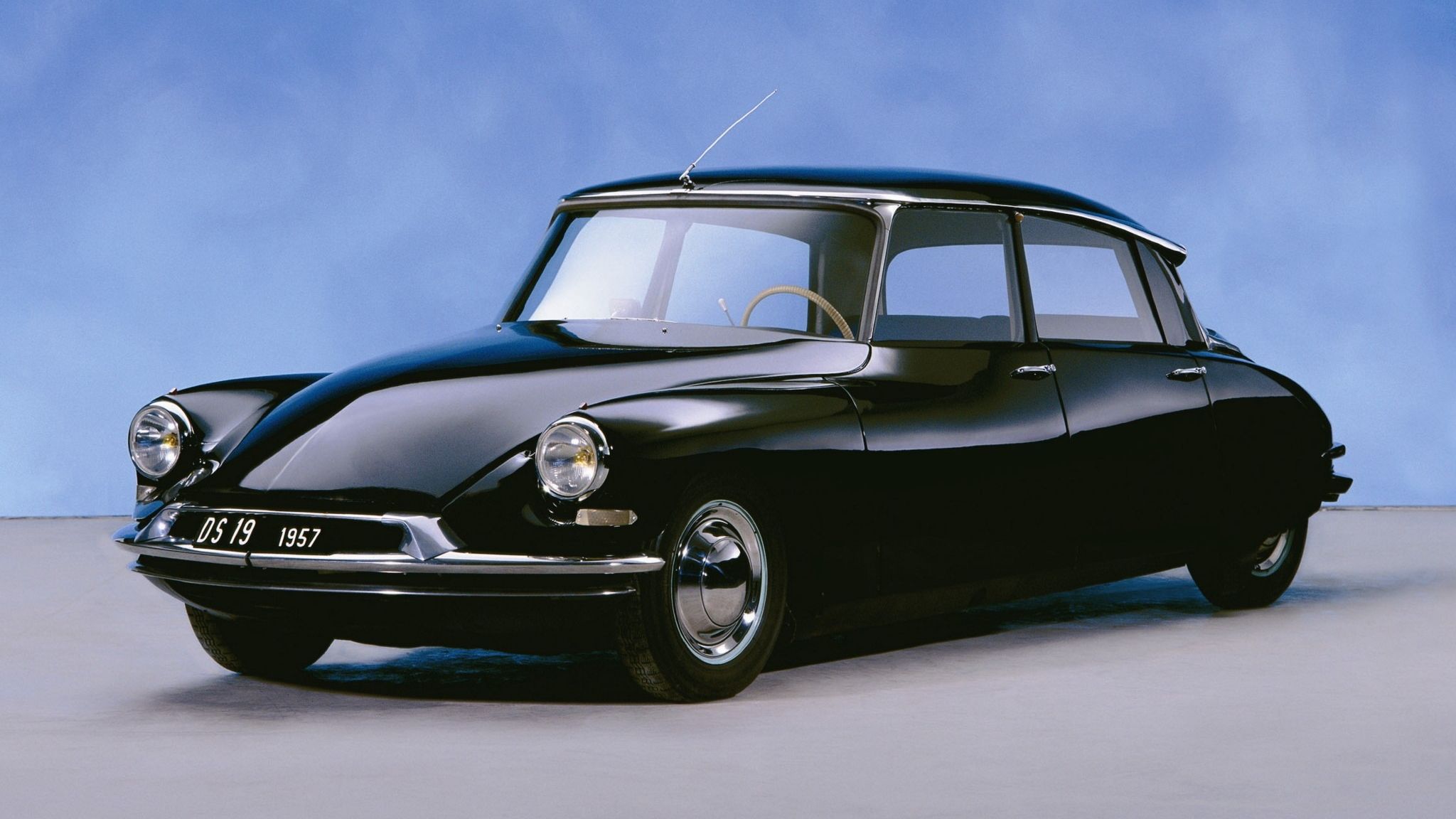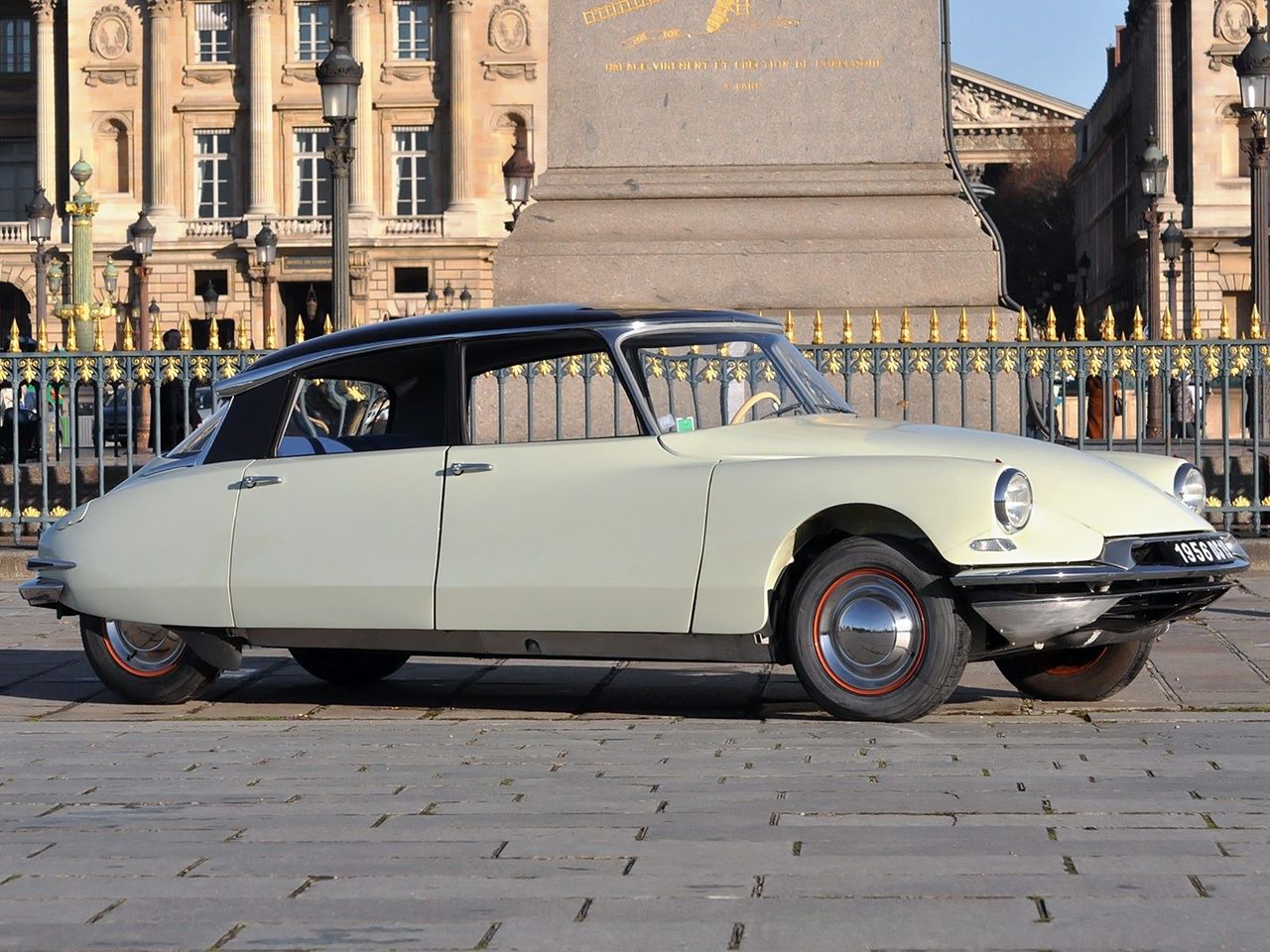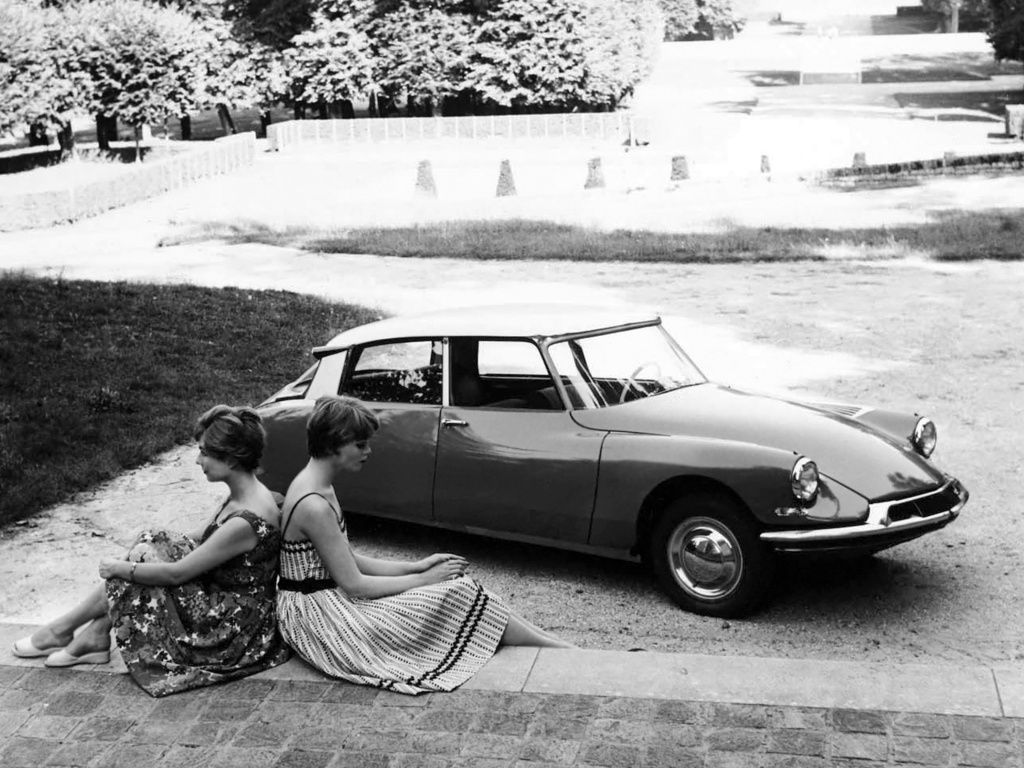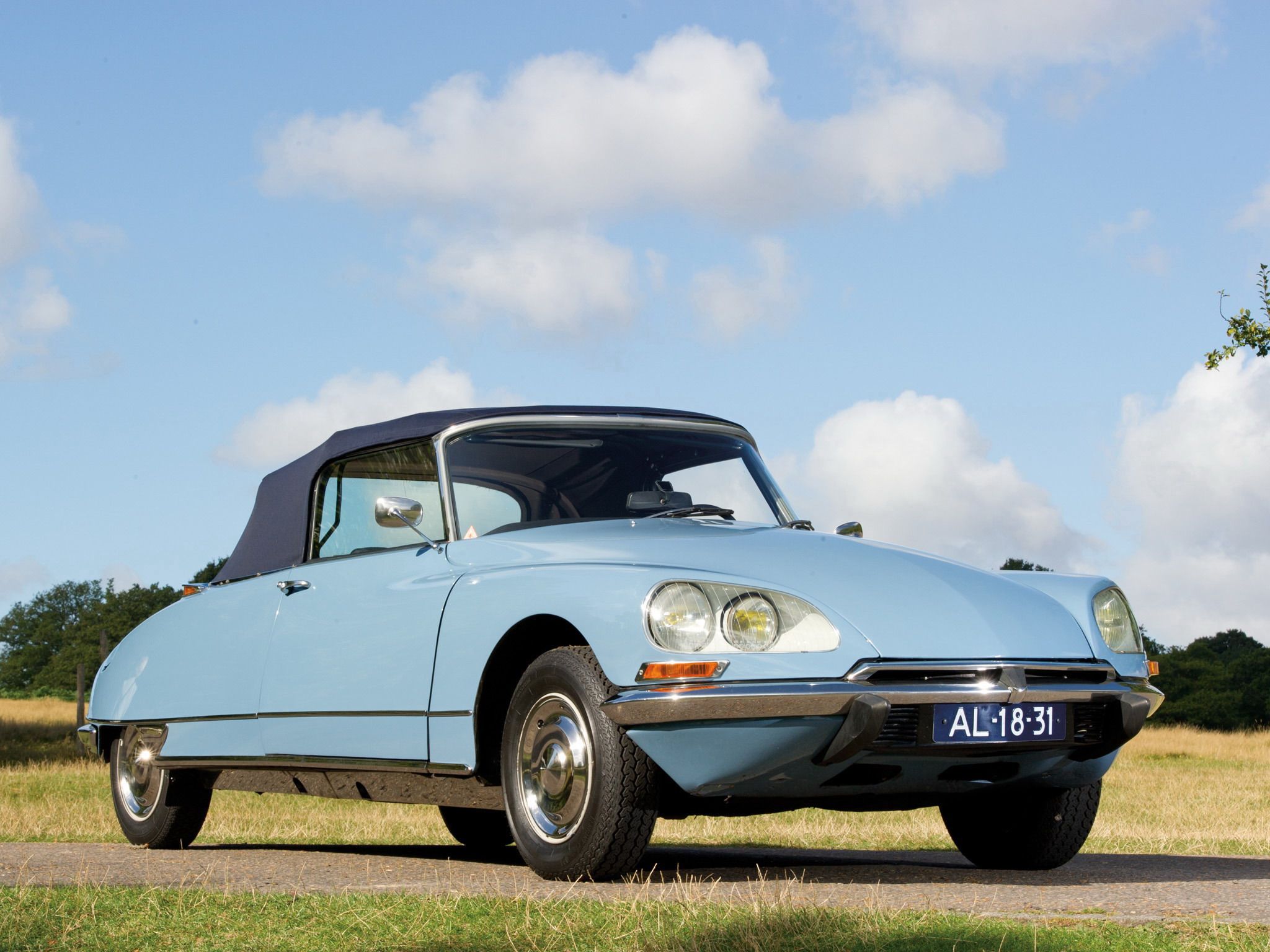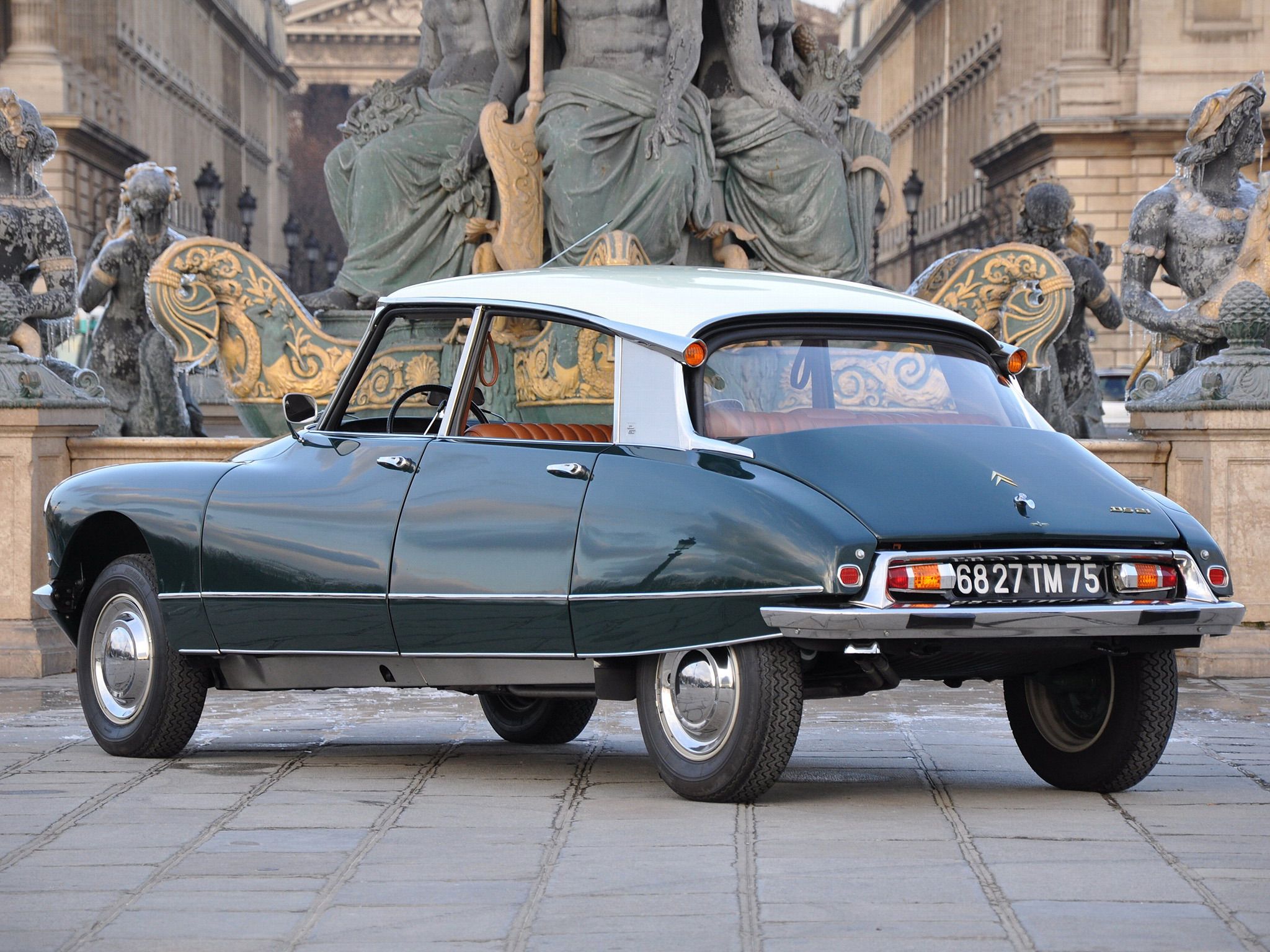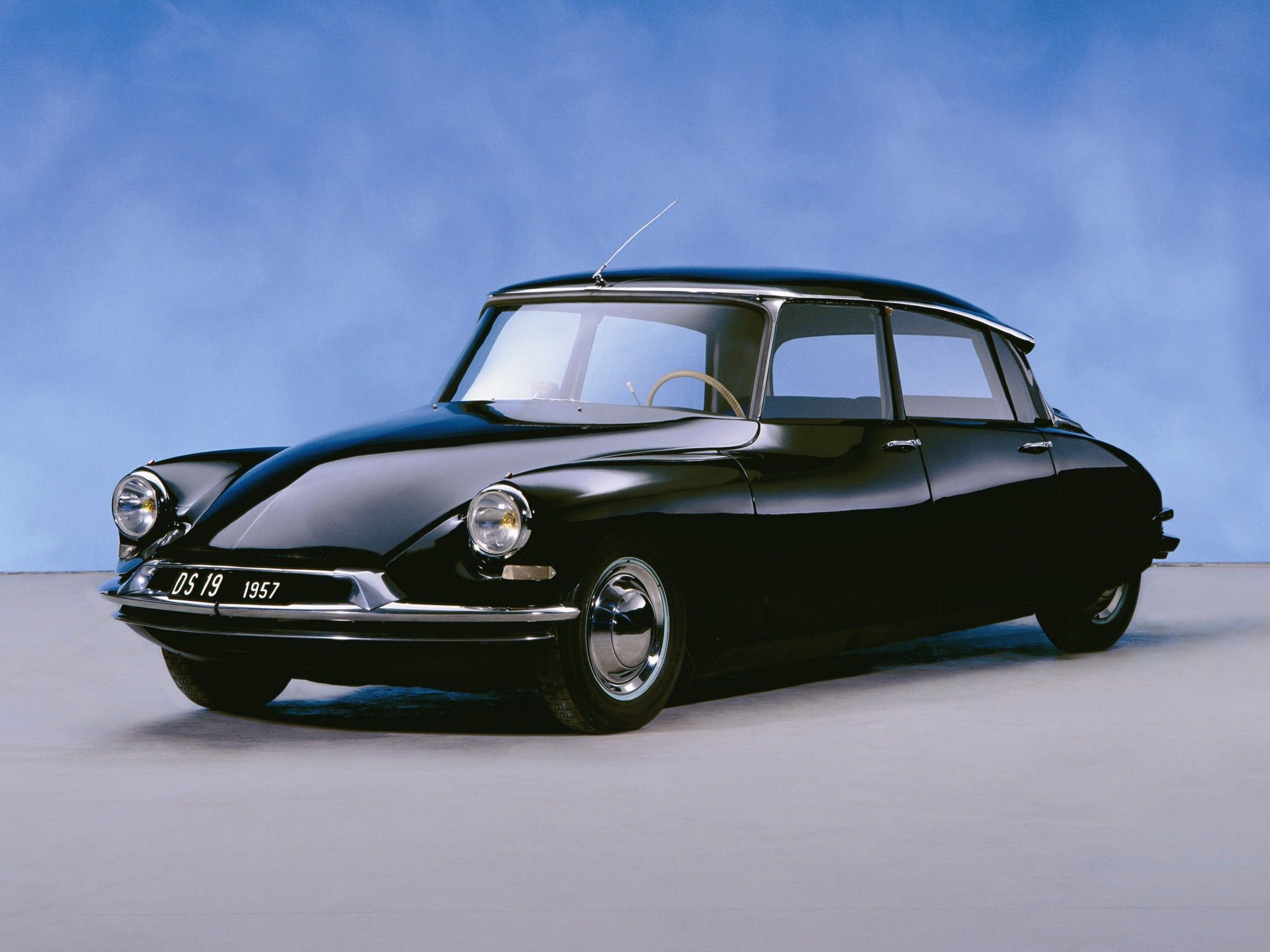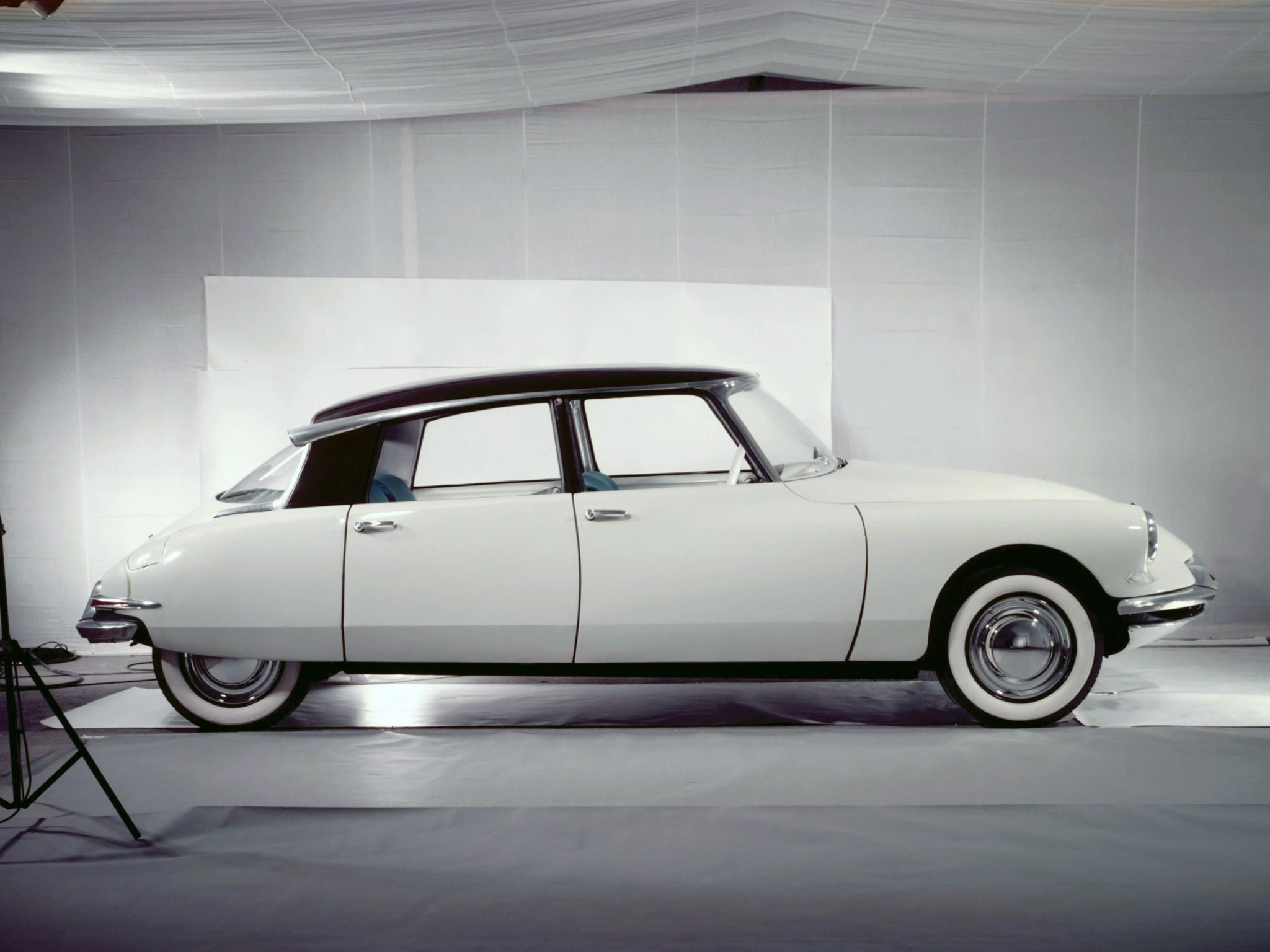Those of her native land pronounce her name “Déesse” – “Goddess,” in French. She was said by structural philosopher Roland Barnes to have “fallen from the sky,” a sculptural beauty that for decades defined the City of Lights every bit as much as any fountain or arch. If you were fortunate enough to live in Paris in the 1970s, the The Goddess was a deliberately artful part of your daily life. Unlike almost any car before, she was styled to cut through the air, but unlike almost every aero-designed car since, she actually looked good doing it.
Beautiful as she was, this deity of French design was much more than just a pretty face. Like Athena, whose namesake city inspired so much of France’s architecture, society and government, the Goddess combined beauty with ingenuity, and sophistication with fierce individuality. When she came to Earth in 1955, she instantly made every other car of her time seem outdated by comparison.
She’s the one, the only…Citroen DS->ke3360.
Continue reading to learn more about the Citroen DS.
Introduction and Design
Citroen made its name in automobiles with the 1934 Traction Avant. The Avant (whose name means “forward”) was the car that almost single-handedly legitimized both unibody construction and front-wheel drive. Actually, the former ultimately wound up making the Avant a pioneer in a slightly less-dignified way. To allay widespread suspicion of unibody construction, Citroen publicly shoved an Avant off a cliff, thus making it the world’s first crash-tested automobile.
The Avant had barely been out for three years when Citroen began designing its successor. Unfortunately, a slight occupation by the Third Reich slowed things down a bit, so a full 18 years went by before the DS debuted at the 1955 Paris Motor Show. Its stunning body was the brainchild former Voisin aircraft engineer and Avant designer André Lefèbvre, along with Italian sculptor Flaminio Bertoni. The two also later co-designed the 2CV, making them the patriarchs of France’s three most legendary automobiles.
Those present in 1955 knew that the DS was an instant legend – and not just because of those Bertoni-designed panels. The DS’s true beauty lay beneath.
Specifications
By American standards, particularly modern American standards, the DS seems oddly proportioned. Most of that goes to its long wheelbase and narrow rear track width. At 123 inches, the DS’ wheelbase was a full 10 inches longer than a modern Ford Explorer’s, and identical to that of a 1962 Oldsmobile Starfire Holiday Coupe. However, the 189-inch-long DS was a full two feet shorter than the Oldsmobile, and 7.5 inches narrower at the hips.
However, its 59.1-inch front track width was less than 2 inches narrower than the Oldsmobile’s. Overall, the DS had the “footprint” of a much larger car beneath a much smaller body, pushing the wheels much further out to the corners than the typical American car. That’s especially important when you consider that at 2,727 pounds, the DS weighed a full 1,500 pounds less than most American cars with similar footprints.
Notice how the DS seems kind of oddly stretched from the front-three-quarter view? As though it’s a lot longer than it really is? That’s the result of an optical illusion called “forced perspective,” itself a result of the DS’s rear track width being a a full 8 inches narrower than the front. The rear track is more in line with what you’d expect of a car this size, meaning that it is in fact the front track that’s wider than it should be.
Citroen didn’t do that to mess with your mind – they’d learned with the Avant that front-drive cars had a nasty tendency to understeer. Making the front track wider than the rear altered the handling balance toward the front, helping the back to step out and the car to remain neutral while cornering.
That’s still common practice today for FWD cars – another pioneering step for the DS.
It served the car well in motorsports as well. The DS won the Monte Carlo Rally in 1959 and 1966, and the 1000 Lakes Rally in 1962. It probably also would have won the 1968 London-Sydney Marathon, had a Mini Cooper driven by a drunk driver not crashed into the winning DS a mere 98 miles from the finish line.
Of course, it wasn’t just the track-width discrepancy that made the DS competitive in rally races. It’s easy to figure out the best place to put the wheels on a car – far more difficult to come up with a groundbreaking new suspension system to control them.
Hydropneumatic System
Back in the 1950s, power steering and power disc brakes were uncommon. Automatic transmissions and fully independent suspensions were as rare as dinosaur feathers. The DS had all of them. And they all ran on the strength of one very innovative hydraulic system.
It started with a hydraulic pump and a spring-loaded accumulator. Part of the hydraulic pressure went to the power steering system, and the remainder went to a “priority valve.” That valve sent power to the front inboard disc brakes and to the front and rear hydraulic suspension systems. A splitter came off of the rear hydraulic suspension line to power the rear brakes. (In many cars, hydraulic power also went from the first splitter to the transmission…but more on that in a moment.)
The hydraulic pressure to the suspension fed into what we’d recognize now as hydraulic shock absorbers – the same kind low-riders use to bounce their pimp rides in time to “music.”
At the top of the shocks, though, was a ball half-filled with compressed nitrogen gas. The bottom half of the sphere was open to the hydraulic fluid running through the shock. When the shock absorber compressed, the nitrogen in the sphere compressed, acting as a kind of “air spring.” In this way, the Citroen system worked much like an airbag suspension does today. However, unlike modern airbags that require separate shock absorbers, the Citroen system dampened wheel movement by restricting oil flow in and out of the cylinder with a valve.
Was Citroen this close to introducing the world’s first adjustable suspension? The kind of modern suspension that allows us to select a soft ride for comfort, or a firm ride for sporty handling? Yes…yes they were. It would have been as simple as installing an adjustable bypass valve in the top of the shock. Perhaps nobody mentioned it at the time, or somebody did and Citroen decided a self-leveling system was a higher priority.
The advantage of the Citroen system was that it allowed drivers to select from four different ride heights depending on conditions. Normal ride height, a slightly higher setting for rougher roads, a very high setting for pounding around rally tracks or through ruts, and the highest setting for fording streams, crossing cornfields and changing tires.
(Fun Fact: You’d change a DS’ tire by setting ride height to the highest setting, and putting a block or jack under the flat tire’s suspension. Then, you’d drop the car’s ride height to the lowest setting, causing the tire supported by the jack or block to lift off the ground.)
For more than 50 years, the DS’s system was considered the best adjustable system available. Unlike with typical airbags systems, suspension firmness and damping didn’t change with ride height. The DS had the same cloud-like ride at its highest setting as it did at its lowest. That served it very well on rough rally courses, and also made for a car that was easy to live with on the street. The ride was unearthly smooth.
But there’s more to a street-friendly car than just soft suspension.
The Citromatic Transmission
Today, it’s getting harder and harder to draw a distinction between manual and automatic transmissions. Automated manuals, dual-clutch automatics, sequential boxes and semi-automatic manuals of all kinds have made for quite a gray area in transmission nomenclature. That gray area started with the Citroen DS.
The Citromatic was what we’d call today a “semi-automatic” manual. Or perhaps a “sequential manual,” if you’re feeling generous.
The Citromatic linked to the engine using a hydraulically controlled clutch that got its power from, you guessed it, the same system that ran the suspension, brakes and steering. A centrifugal controller connected to the engine disengaged the clutch at low rpm, keeping the engine from stalling. The brake pedal also connected to the carburetor, and dropped idle speed while the car was sitting at stop lights. Releasing the brake caused the clutch to engage slightly and drag, causing the car to creep forward much like any other automatic transmission car.
The Citromatic was a true “semi-automatic,” in that drivers had to manually select the gear they wanted using a flappy-paddle-like lever behind the steering wheel. Flicking the lever didn’t engage the gear, though – it didn’t engage until the driver lifted off the accelerator. Lifting off the gas pedal triggered the up- or down-shift into the pre-selected gear.
Yes, it does sound a bit cumbersome by today’s standards. However, it’s functionally very similar to the Super 10 transmissions once used in semi trucks; and as any trucker who’s driven a Super 10 (yours truly included) can tell you, the “preselect-and-lift” approach does make life significantly easier in town.
Too bad Eaton was 40 years behind Citroen in coming up with it.
Other Innovations
The DS was full of interesting little touches, at least two of which proved well ahead of their time.
In 1967, Citroen installed headlights that swiveled when the driver turned the steering wheel. The inner two of the DS’ four headlights would turn up to 80 degrees in whatever direction the driver turned the wheel, allowing him to see around turns while bombing around curvy roads at high speed. The outer two headlights stayed pointed straight ahead – STRAIGHT ahead. Citroen mounted them on a horizontal axle, and made them self-leveling so the beams would stay parallel to the road as the car nosedived during braking.
You could say “as it squatted under acceleration” too, but you’d have trouble saying it with a straight face. With only 74 horsepower from its tiny 1.9-liter engine, the DS would have to work pretty hard to lift its nose.
The engine was always a compromise, and far removed from the Porsche-type flat-six Citroen wanted to install. However, French fun-killers placed a hefty tax on anything with more than 2.0 liters of displacement. For that reason, the DS got an engine that almost qualified as an antique in its own day, and a zero-to-60 time on the hilarious side of 22 seconds. Top speed: a whopping 84 mph. True, Citroen did eventually offer a 141-horsepower, fuel-injected 2.3-liter – but even so, the DS probably wasn’t schooling any Mercedes or BMWs on the Autobahn.
However, it seems BMW did learn a little something from the DS.
Modern M3s and M4s have carbon fiber plastic roof panels – they have for about the last 10 years. The lightweight roof cuts significant mass off the highest point of the car, which lowers its center of gravity and reduces body roll while cornering without resorting to stiffer springs. Good idea, that was. Ask Citroen.
They built the DS with fiberglass roof panels for exactly the same reason.
Summary
Among the Pantheon of automotive greats, the Goddess truly has earned every bit of worship she’s garnered. Over the course of 20 years, Citroen sold just shy of 1.5 million models; apart from the VW Beetle and the Mustang, very few cars of the time can claim those kinds of numbers. Even as late as 1969, a full 14 years after it came out, the DS sold in greater numbers than the Mustang fastback and convertible put together. In fact, in 1973, one year before it went out of production, the DS still sold at 67 percent the rate of Ford’s flagship ponycar.
The CX followed the DS, as did a whole line of C-Series cars up to the current C5 sedan. But the DS is no elder goddess, lost to history. It’s back, with Citroen’s new line of DS supermini hot hatchbacks. Genealogically speaking, the new DS3 doesn’t descend directly from the original DS – but it does inherent the DS’ crown in a much more relevant way.
Named Top Gear Magazine’s Car of the Year in 2010, the DS3 is deliberately “anti-retro.” As beautiful, sculptural and modern as anything on the road today, the DS3 is a fine tribute to the Goddess. Like the DS, the DS3's styling looks to the future. Nevertheless, the DS3 will never be the DS; there’s only room for one goddess in this Pantheon.
And she’s been here for quite some time.

